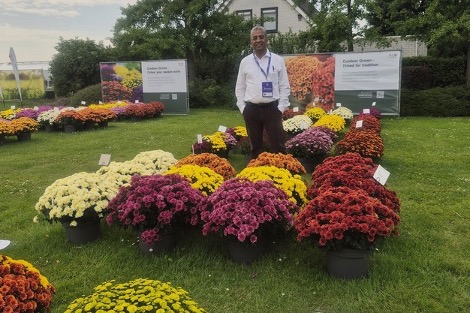“Kenya is no longer a single-product country,” Kumaran emphasizes. “You name a flower, it’s grown here.”

For decades, roses reigned supreme in East Africa’s flower fields, defining the region’s global reputation. Today, that dominance is being challenged. Growers are no longer betting solely on roses. They are building a new, more resilient industry rooted in diversity, innovation, and global ambition.
Roses No Longer Rule Alone
“Roses were my first crop,” says Senthil Kumaran, African representative for Asthor Agricola S.A., a global leader in greenhouse technology. “But I moved on.” His words reflect the reality on the ground. While roses remain central, farms across Kenya, Ethiopia, Uganda, and Tanzania are embracing new varieties such as lisianthus, carnations, chrysanthemums, spray roses, and gypsophila.
Lisianthus, Kumaran’s second major crop, epitomizes this shift. Long considered too complex for African conditions, it was once the preserve of Dutch growers. Today, African farmers are proving they can master it, and more.
Kenya and Ethiopia: Global Heavyweights
Kenya and Ethiopia dominate the global rose trade. Together, they are two of the four countries that control the world’s supply. Kenya’s success rests on its climate, skilled workforce, and superior logistics. Ethiopia, a relative latecomer, caught up fast thanks to pro-investment policies and infrastructure.
“No other African nation can replicate their advantages,” Kumaran says. “Even South Africa imports roses from Kenya.” These two nations remain the backbone of Africa’s floriculture exports, but the model is evolving.
Innovation Is the New Currency
The African flower sector is no longer expanding acreage for roses. Instead, it is upgrading. Advanced greenhouses, post-harvest systems, packaging innovations, and specialized marketing are raising efficiency and value. Spray roses, garden roses, and scented varieties now command premium prices.
“Kenya is no longer a single-product country,” Kumaran emphasizes. “You name a flower, it’s grown here.”
Costs, Crises, and Resilience
But progress comes with pressure. Rising labor and energy costs are squeezing Kenyan farms. New emerging pests have threatened exports. Global logistics shocks have been brutal.
“Last December, flowers rotted in warehouses because planes weren’t available,” Kumaran recalls. “Volumes were destroyed.” Yet the industry adapted, securing freighter capacity and exploring sea freight.
Europe and Asia: Markets in Motion
Europe remains the anchor, with the Dutch auction system at its heart. But Asia is the growth frontier. New markets in Japan and Korea are already delivering results.
Beyond Flowers: A Greener Gold
Floriculture’s infrastructure is now feeding other crops. Dutch cutting companies maintain mother stock across East Africa, while many flower growers are shifting into avocados. “In Kenya and Uganda, avocados are becoming the new green gold,” Kumaran notes.
The verdict is clear: roses built the foundation, but diversification will secure the future. “We’ve reached saturation in roses,” says Kumaran. “The next phase is innovation, specialization, and bold expansion into new crops and markets.”
Africa’s floriculture is not declining; it is reinventing itself. The world should take note: the continent’s flower story is only beginning.
